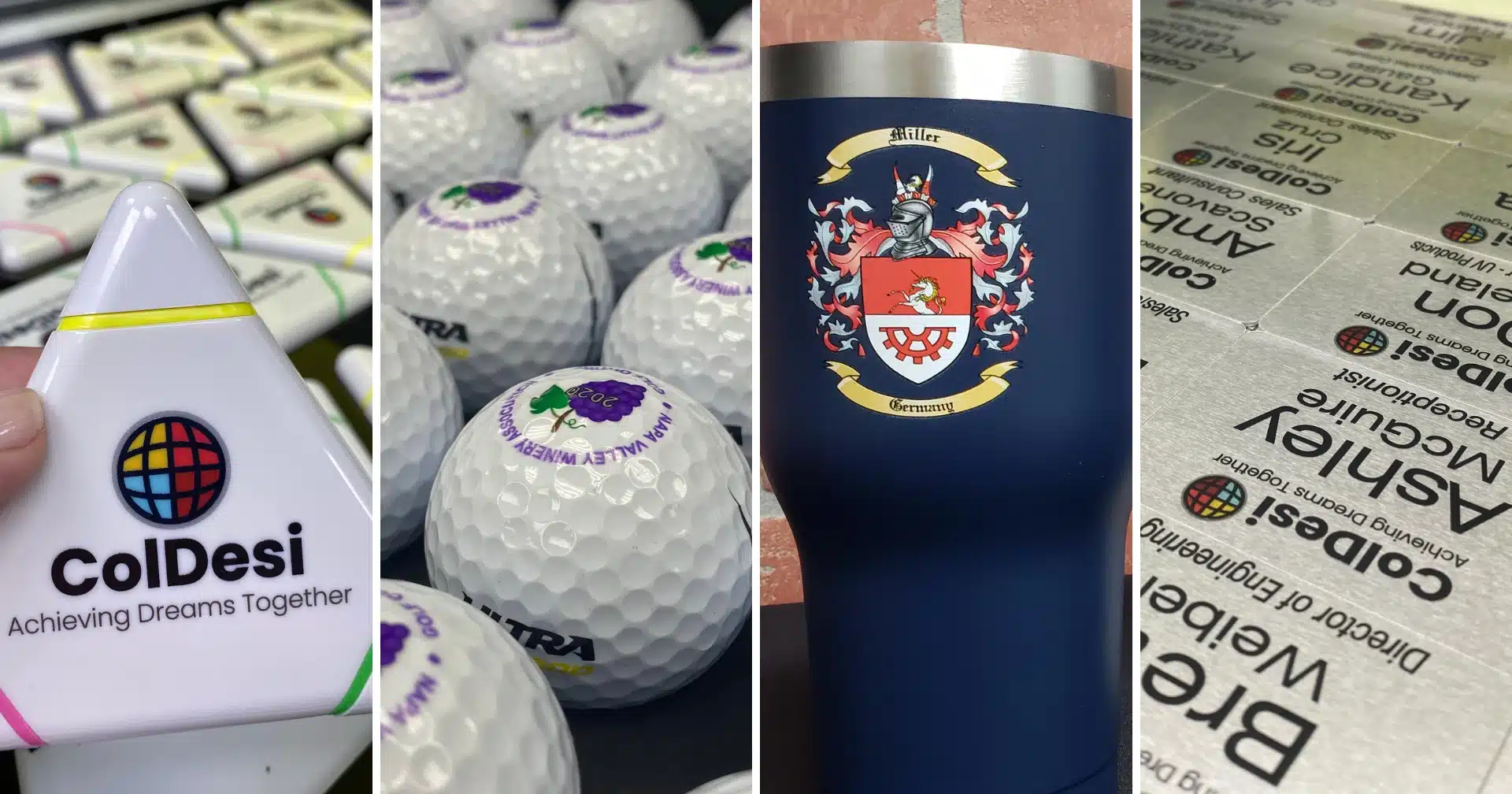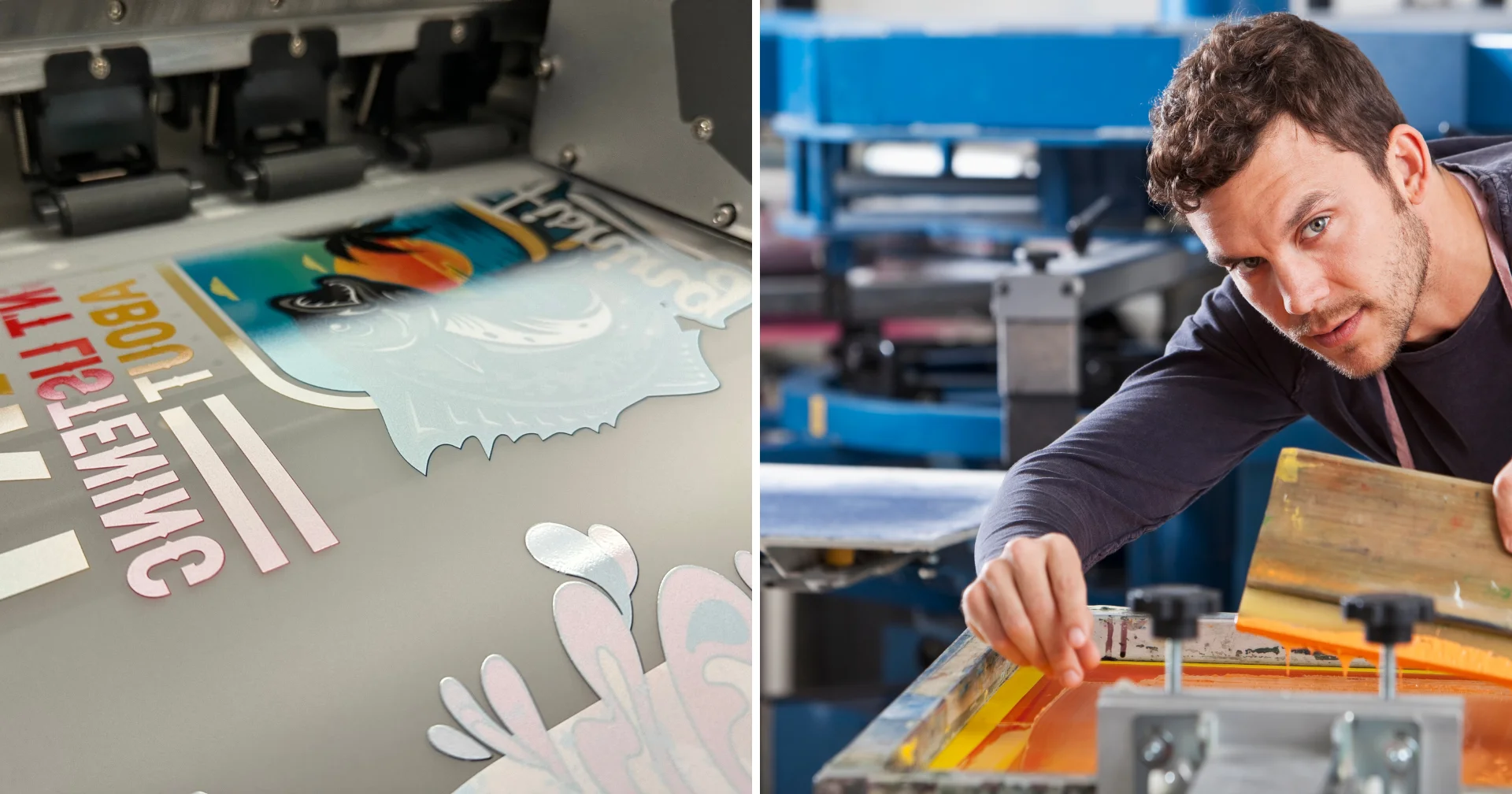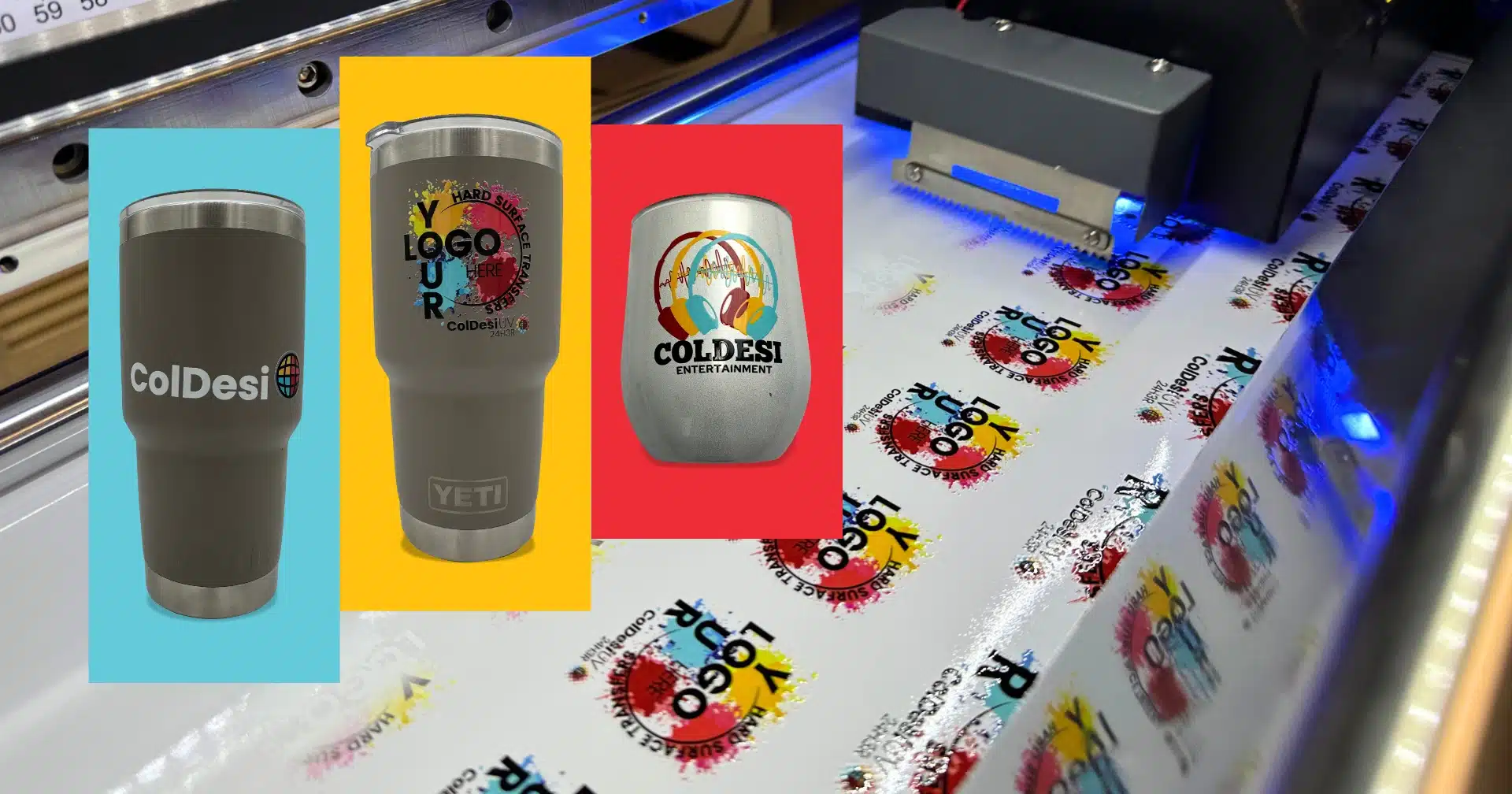A Business Killer is something that an owner does, or does not do, that drives away new business or sends existing customers to the graveyard of lost sales and profits.
It’s something that contributes to a business’s failure or stunted growth. Business Killers can be what separates a thriving, successful apparel decoration business from one with an embroidery machine or DTG printer freshly listed on eBay.
ColDesi has helped THOUSANDS of people get started, thousands of businesses expand and spoken to hundreds of individuals whose businesses are struggling. We’ve taken those lessons and come up with these Top 10 Business Killers:
Pricing to Lose Money
If you’re busy make custom t-shirts every day but at the end of the month, your bank account is empty you probably have a pricing problem.
Many entrepreneurs that are opening up their first business suffer from the same problem – they charge as little as possible for their work or product. It may be that they base their pricing for custom t-shirts on the lowest price in their area thinking it’s the only way they can get the business.
It may be that they charge for their jobs based on how much they think they should make in an hour – the minimum amount – and then don’t consider the time it takes them to do marketing, talk to the customer on the phone, and return emails, count inventory, create the graphics and all the other things it takes to run a business.
It may be that they end up giving the friends and family discount to big orders or every order. You have to price profitably!
Cash Flow Killers
Cash flow is probably the #1 reason that small businesses fail. Even if you master pricing your products for that perfect balance of costs and profits, it won’t help you if you don’t have cash in the bank.
Many people that we speak to choose to purchase custom t-shirt printers or embroidery machines with cash rather than lease it so they won’t have any debt hanging over their heads when they get their business started, but that may not be the best option for their business.
Think about cash flow as that daily balance in your business checking account. You have to make sure that not only do your receivables – money coming in – hit the bank before your payables – money going out – but also that you have enough to cover your bills if they do not.

Here’s the primary cash flow Business Killer scenario:
- You get that phone call you’ve been waiting for! The biggest University in the area wants 1000 embroidered caps with their logo.
- A good price is negotiated that will end up being very profitable for you and still keep the University coming back for more.
- Of course, you’ll accept a Purchase Order, it’s the only way they’ll pay you. Net 45 days.
You will need to buy the caps, with a few extra purchased in case there are any mistakes. Then you will devote your time, your employees time and tie up your equipment for maybe a week or 2 completing the job.
So you will be spending $3K or $4K on the caps, that’s obvious, but what’s not obvious is the opportunity cost.
How many smaller, simpler, more profitable deals will you NOT do during that time? Deals that would prepay or COD? Do you have the cash to spend on the caps, spend on other jobs that you’re doing and still make the mortgage?
The worst part of this is that the University, or big business, will probably NOT pay you in 45 days.. it will be 60 or even 90 days and that’s AFTER YOU DELIVER.
If you don’t have the cash to float your expenses while this deal is completed, you’ll miss your next rent payment, lease payment, employee payroll and then starts the spiral to business failure.. seemingly right in the middle of your biggest success.
The answer isn’t to take ANY big deal, and you should always pursue dream opportunities, you just have to be smart and consider your CASH FLOW.

Failure to Maintain
You get the job, and your equipment doesn’t work. Not only will that kill that sale, but it might kill your enthusiasm for the business too.
Thousands or tens of thousands of apparel decorating machines are sold every year. Direct to garment printers, screen printing equipment, heat transfer printers, rhinestone machines, plotters, embroidery machines… there seems to be an endless variety. Each one of them has their own set of requirements to keep them running right!
Embroidery machines need oiled and the bobbin case cleaned, rhinestone and spangle machines need oiled and clean, direct to garment printers and sublimation systems need to be used and maintained on a regular basis.
But many entrepreneurs don’t schedule or budget their time for these important activities, and they pay for it through lost orders or expensive repair bills – those are the Business Killers!
This could be the easiest Business Killer to avoid. Just follow the recommended maintenance schedule AND don’t wait until you have a big job before you check your equipment.
Here’s a prime example: DTG printers require regular maintenance, even if they are not being used. So, if you purchase a DTG printer, then leave it alone for a month while you get your business going you will probably need to replace the print head, which is expensive and time-consuming.
However, if you print a sample shirt every day and do the 10 to 15 minutes of maintenance on the recommended schedule that printer will be ready to go whenever you are!
Another good example is an embroidery machine – if you fail to oil it and clean it, you’ll end up with damaged equipment and a poor quality embroidery job. The answer is to understand how to maintain the equipment – and then DO IT.
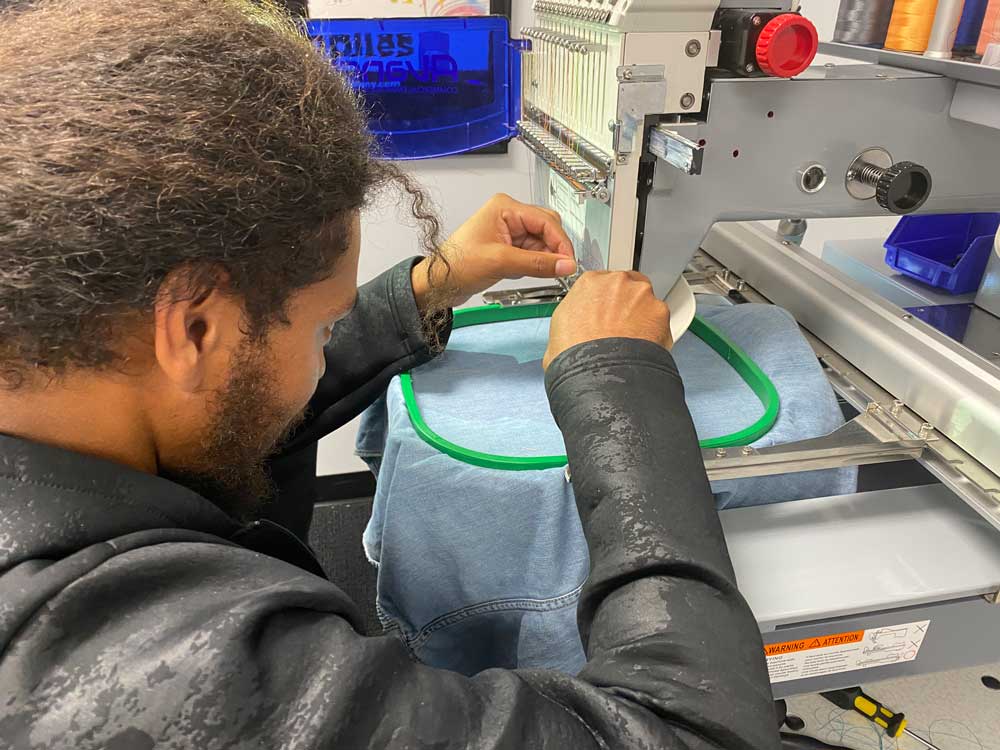
Not Getting Training BEFORE Operating Equipment
Don’t let your ego interfere with your success, it’s a Business Killer.
“I’ve been embroidering with my home machine for 20 years”, “It’s a printer, I’ll just hook it up to my computer and print”, “I’m great with computers, I can learn this software no problem”, “I don’t have time for training, I have a business to run! It should just work.”
These are all thoughts that may be running through your mind while you’re shopping for a new t-shirt printing machine, bling machine, etc and in some cases can spell an early end to your entrepreneurial efforts.
Most sellers of real commercial apparel decorating equipment offer training for FREE, either online or in person. But we know from experience at ColDesi that not all of our customers take it.
Or at least they don’t take it until AFTER they’ve spent several frustrating hours running shirts, caps and occasionally even damaging equipment.
Training will teach you not only the proper use of the equipment, but the proper maintenance too, and will save you hours of time and potentially thousands of dollars. Don’t kill your business because you haven’t been trained!
No Marketing, No Sales Efforts = No Customers
If you are waiting for people to magically find your business you will probably Kill your Business.
You may be the most talented artist ever to open Corel Draw, have a huge pile of dough in the bank, gone to multiple training classes and researched the perfect price to charge for everything you do, but if no one knows you’re there you simply will not succeed.
It’s common for creative people to want to turn their talents into a business, and they’re often very successful. But it’s rare that a great idea for a t-shirt brand, beautiful embroidery work or the best looking bling designs hit it big by word of mouth alone.
Give as much time to considering how you will spread the word about your product or your business as you do which piece of technology to use. You may have a built-in market, like starting a bling shirt business because you participate in cheerleading or dance events and know people in the industry.
Or you may be expanding a business by adding DTG Printing due to current customer demand for high quality, short run custom tees. But many times you are starting from scratch with an idea for what to sell, but not how to find buyers.
There are many free resources available for custom apparel entrepreneurs that will help you avoid the “staring at the phone” Business Killer. Here are just a few:
Bad Marketing and Customer Service
You may be driving people away from your business while you’re trying to be clear about your business.
It can be REALLY frustrating dealing with customers every day! They try and send you attachments that are too large, send you graphics that are small and ugly or have unreasonable demands about when they need their order ready.
But don’t scare them away in advance by sending this real world example as an auto response to their inquiries or as the primary message on your front page:
“We are running about 3 TO 5 working days production time after approval of artwork, plus shipping time. Colors appearing in this email vary widely depending on the screen from which you are viewing. We are not responsible for customer supplied goods.
We do not offer refunds on custom designs. We will send you a digital proof to approve and price before we run your job. THERE IS A 6 PIECE MINIMUM (per color change) ON ALL ORDERS.
There will be a $10.00 set up charge with one free design change. We will charge 1.00 per transfer to heat apply the rhinestones to garments. We can do either 6 sizes or 6 colors of stones per design
Thank you for your business. Hours: Monday-Thursday 9:00-5:00 Friday 9:00-4:00 Saturday – Sunday Closed Indemnity Clause: Clients guarantee they have legal rights to use all logos, words, symbols, designs or art as their submitted artwork.
Clients also agree to indemnify and hold XYZ Company and it’s parent company and its agents, officers, representatives, and employees harmless for all damages as well as attorney’s fees spent with regard to any and all legal actions which result from the production of any artwork submitted by said client. XYZ Company 888-555-1212”
While there’s nothing particularly objectionable about their terms and conditions, it doesn’t really roll out the red carpet for potential customers, does it?
If you sent an inquiry about getting some work done, would you really be excited about doing business with a company that puts legalize on their front page or as a response to ANY email you send them?
This message is from a successful company, so it’s clearly not always fatal, but treat your customers like you’re excited to hear from them first, then send them to your FAQ for ordering guidelines and avoid this easy Business Killer.
Supplies Mis-management
If your FedX bill larger than your supply costs for the month, you are suffering from the Supply Management Business Killer.
So you have your supplies stored all over the house, in the garage or stashed in a corner of your business office and the only time you look at it is when you’re refilling ink, rhinestone hoppers or spangle reels?
That’s going to kill your business. A liter of DTG Ink, for example, might cost you $150 to buy. But let’s say you’re not doing any kind of inventory control and you get that great opportunity phone call on
Thursday morning: (Begin cheesy dialogue) “Hey Bob, I need 30 t-shirts for an event on Sunday and you said you had fast turn around time. Can you do it?” “Of course I can! That’s why I use a direct to garment printer, Steve,” you say. 10 minutes later: “Oh no! I don’t have enough Cyan DTG Ink to complete the order what will I do?”
The answer is that you’ll buy a liter of Cyan ink for $150, and pay $100 or more to overnight it to your shop!
Believe it or not, the numbers on embroidery supplies are actually WORSE. You can pay more than twice the amount a cone of thread costs you in overnight mail, making your supply costs 200% or 300% of what they should be.
There’s a great article on the importance of supply and inventory management right here. Read it and take it to heart or you’ll lose money or lose customers to this easy fix Business Killer!
Not Keeping Good Records
Let’s face it, some people get this and others have to learn this lesson through bitter tears. The custom apparel business is a REPEAT business.
Your going to want to focus your efforts on making sure that your product is of the highest quality, and that your service is top notch. That means you’ll need to take responsibility for all the details.
Keeping good records of the exact colors you use, and the sizes of your jobs, and everything that pertains to that job you do will help you not only cover yourself in the event of a misunderstanding, but it will make things much easier on the repeat business.
Gete in the habit of having a job sheet handy and a great filing system that lets you look up any customer and anyjob at a moments notice. Computer systems can help.
There are some great aftermarket systems for keeping track of jobs even to the point of allowing your customers to place orders online. Also, there are some great free excel spreadsheets for custom apparel work out there that you can use.
Trying to Do It All Yourself
No man is an Island (No Woman either). That phrase has been around for a long time for a good reason. And it applies in the business world more than you might imagine.
There’s another phrase out there you may have heard too: ” If you want something done right, you’ve got to do it yourself.” These two pieces of advice seem to clash, Which one is it Well, it’s BOTH.
Great leaders end up realizing that it’s their job to make sure that they tap into all the skills that others around them possess. To bring in help and to teach others in an encouraging way how to take responsibility for their work in the same way you would.
You can’t assume others will know what you do or even care about your business the way you do. However, you can give people and sub-contractors the incentive needed to want to make things turn out the same way you would.
And Lastly, Don’t Be Stingy – Be Generous
Try to get in the habit from time to time of helping out some of the groups and organizations you work with by throwing in a few extras.
If you’re bidding your jobs correctly and accounting for all your costs up from and making sure you leave yourself enough profits. You’ll next want to occasionally give some things away.
The good will you develop with the bigger organizations and groups by helping out or doing some “in-kind” donations of custom products will keep them coming back for that precious second and third and forth order.
There is always a certain amount of business you lose simply through attrition, so you’ll want to make sure you additional orders and nother can turn off a client more by charging them for ever little detail or only thinking of yourself.
Yes protect your business. But try whenever possible to give some things away to make doing business with you a win-win in the mind of your clients.

